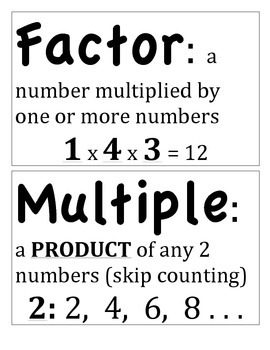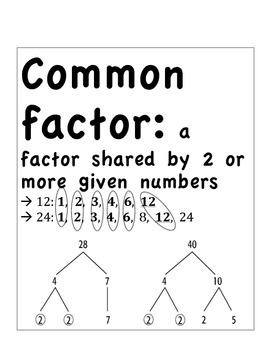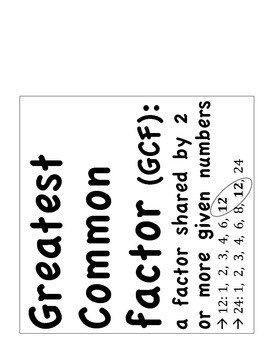Factor & Multiples Word Wall with Visuals
Goodbye Monotonous Middle School Math
119 Followers
Grade Levels
4th - 6th
Subjects
Resource Type
Standards
CCSS4.OA.B.4
CCSS5.NF.A.1
CCSS6.NS.B.4
Formats Included
- PDF
Pages
8 pages
Goodbye Monotonous Middle School Math
119 Followers
Description
This "Factor & Multiples Word Wall" is perfect for visual learners & is supported by multiple theories for student learning for all children! It can be used to introduce the vocabulary, and as well to reference throughout the unit and year. The ability to compute multiples becomes crucial for students in order for them to be successful with adding & subtracting (especially unlike fractions) and multiple & divide fractions. Additionally, students must grasp the concept of factors in order to simplify and identify equivalent fractions. This word wall is one of many strategies and methods to ground as many students as possible in a deep understanding of factors and multiples!
Includes the following vocabulary:
**Factor
**Multiple
**Factor Tree
**Greatest Common Factor (GCF)
**Rainbow Factor
**Exponent & Base
**Prime Factorization
**Prime
**Composite
Includes the following vocabulary:
**Factor
**Multiple
**Factor Tree
**Greatest Common Factor (GCF)
**Rainbow Factor
**Exponent & Base
**Prime Factorization
**Prime
**Composite
Total Pages
8 pages
Answer Key
N/A
Teaching Duration
N/A
Last updated Nov 27th, 2014
Report this resource to TPT
Reported resources will be reviewed by our team. Report this resource to let us know if this resource violates TPT’s content guidelines.
Standards
to see state-specific standards (only available in the US).
CCSS4.OA.B.4
Find all factor pairs for a whole number in the range 1-100. Recognize that a whole number is a multiple of each of its factors. Determine whether a given whole number in the range 1-100 is a multiple of a given one-digit number. Determine whether a given whole number in the range 1-100 is prime or composite.
CCSS5.NF.A.1
Add and subtract fractions with unlike denominators (including mixed numbers) by replacing given fractions with equivalent fractions in such a way as to produce an equivalent sum or difference of fractions with like denominators. For example, 2/3 + 5/4 = 8/12 + 15/12 = 23/12. (In general, 𝘢/𝘣 + 𝘤/𝘥 = (𝘢𝘥 + 𝘣𝘤)/𝘣𝘥.)
CCSS6.NS.B.4
Find the greatest common factor of two whole numbers less than or equal to 100 and the least common multiple of two whole numbers less than or equal to 12. Use the distributive property to express a sum of two whole numbers 1–100 with a common factor as a multiple of a sum of two whole numbers with no common factor. For example, express 36 + 8 as 4 (9 + 2).





